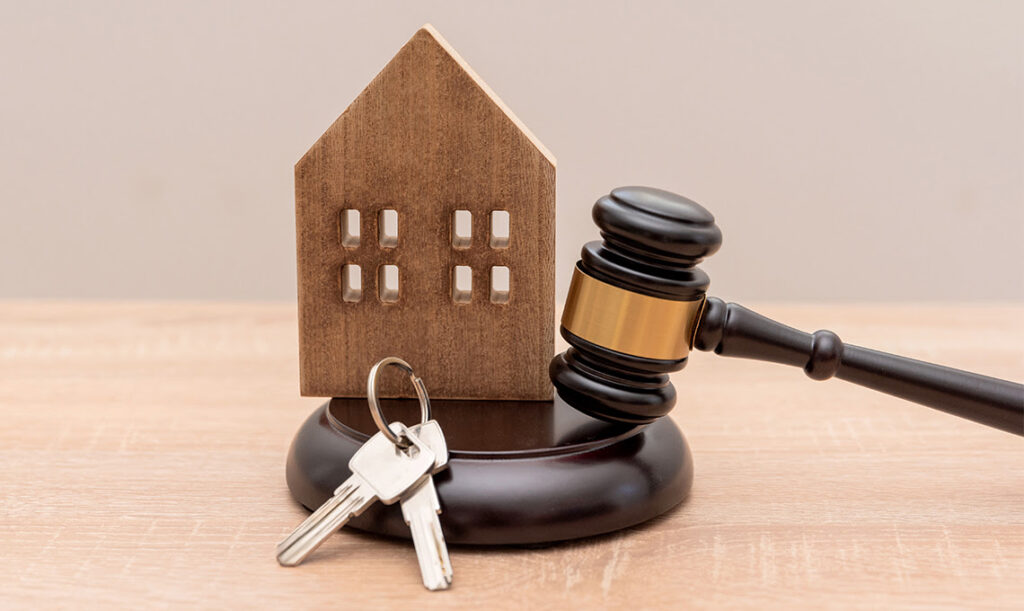
San Diego’s rental market has become extremely tight over the past few years, and vacancy rates are now sitting below 3% while average monthly rents have pushed well past $2,800. Property owners who live in their primary residence have an opportunity that’s worth a deeper look – rental conversions can put some steady monthly income in your pocket, and the housing shortage means that tenant demand will stay strong throughout the metro area.
Converting your home into a rental isn’t quite as easy as just putting up a “for rent” sign. Recent ADU law changes have actually made some parts of the conversion process easier to figure out, but new tenant-protection ordinances mean that you’ll need to be extra careful about staying on the right side of every law. Your success will depend on getting your permit paperwork, updating your mortgage and insurance, and meeting your property’s habitability standards.
Let’s cover San Diego’s rental laws and permit laws so you can see what your conversion timeline is going to look like.
San Diego Rental Laws That Owners Should Know
San Diego rental laws are tougher than most property owners realize. This is especially true if you’re putting your home up on the rental market for the first time. Some pretty strict laws have rolled out over the past few years, and homeowners don’t find out about these laws until they’re already deep into the rental process. Most residential properties fall under particular zoning restrictions, and these local ordinances either completely ban short-term rentals or require you to get a lot of different permits to legally start hosting paying guests.
Each neighborhood in San Diego has its own laws for short-term rentals, and the differences between them can be pretty dramatic. Plenty of neighborhoods are completely open to vacation rentals and barely have any restrictions at all, but others have gone ahead and banned them altogether. These laws also get updated pretty frequently, so even if you looked into this last year, it’s worth taking a second look to make sure nothing big has shifted in your area.
If you’re considering adding an accessory dwelling unit to increase your rental income, California has just made the process way easier for property owners. California’s 2025 laws let you build ADUs with far less red tape than we’ve seen in the past. You can convert that existing garage space or build a completely new unit somewhere in your backyard. Most standard ADU applications now have to be approved within just 60 days of submission.

Your homeowners association probably has some rental restrictions, too. Plenty of associations actively limit rentals because they want to preserve that established neighborhood feel and character. Read through your CC&Rs before you’re making any concrete plans or investments. Some HOAs ban short-term rentals altogether, but others put caps on how many homes in the community can become rental properties at any given time.
I see property owners run into this problem all the time – the city takes illegal rental operations very seriously when they find them. Fines start at around $250 per violation and climb from there depending on how bad it is. Your neighbors can easily report suspected violations through the Get It Done app, and it makes enforcement far more likely than it used to be. Code enforcement officers will come out to investigate reports and issue citations when they find problems.
It’s not worth the headache when the permits are actually pretty easy to get.
How Your Mortgage and Insurance Will Change
Your mortgage company needs to know about this change instantly. Most residential mortgages actually have clauses built right into them that require you to live in the home as your primary residence. A conversion to a rental property might break these terms without you even realizing what happened.
Some lenders will let homeowners keep their existing mortgage if they’ve already lived there for at least a year. Others will want you to refinance with an investment property loan instead. These investment loans almost always come with higher interest rates, and they’ll want bigger down payments, too. It’s worth calling the lender about it just to stay away from any nasty shocks down the road.
Insurance coverage is going to change completely as well. Normal homeowners insurance just won’t cover you for tenant-related problems or any loss of rental income that might happen. Landlord insurance is what’s needed instead, and it’s completely different. A tenant who gets injured on the property could sue for hundreds of thousands of dollars.

Tax implications change quite a bit once this turns into a rental. You can deduct all kinds of costs, like repairs and maintenance, plus property management fees. You can also start depreciating the building value over 27.5 years, and this depreciation actually cuts down on taxable income each year.
Just remember that property management firms usually charge somewhere between 8 and 10 percent of monthly rent. Some owners think they’ll save money if they manage everything themselves. That strategy works fine until the first midnight maintenance emergency hits or you have to chase down late rent payments from problem tenants.
Safety Rules for Your Rental Property
Before you start to advertise your rental property, you need to meet California’s rental standards first. San Diego has some very complete laws about basic maintenance and safety. Your home needs specific safety features before the tenants move in.
Safety comes first with rental properties. California law says you need smoke detectors in every bedroom and in hallways outside sleeping areas. You also need carbon monoxide detectors on each floor if your home has an attached garage or uses gas appliances. Living in earthquake country means you should have your water heater secured with straps and have any gas appliances fitted with flexible connectors. These aren’t suggestions – they’re the law.

Your property’s condition directly shapes the rent you can charge. San Diego tenants have different expectations depending on the neighborhood. Homes in East County or another inland area need air conditioning – it isn’t optional anymore. Summer heat waves make it a must. Properties near the coast can sometimes get away without AC. Outdoor spaces then become the main attraction. A well-maintained patio or balcony can sometimes justify higher rent in beach communities.
California’s new energy-efficiency laws are going to affect rental properties across the state. Investment property owners will most likely be affected as well. Getting ahead of these laws means that you’ll need to replace all the old light bulbs with LED fixtures throughout the house and install low-flow bathroom fixtures. Both of these upgrades help keep the monthly utility bills down for your tenants and make your rental even more interesting. Even better, these energy-efficient improvements can qualify you for cash rebates through SDG&E, so you’re paid to make your property worth more.
Find the Right Tenants for Your Property
After your property is ready, the next step is landing a great tenant. San Diego attracts all kinds of renters, so having an idea of what to look for helps as you go through the applications.
Service members from the local bases make great tenants. They have steady paychecks and housing allowances that more than cover the rent each month. Tech workers from firms in Sorrento Valley and downtown are also reliable about paying on time. Students and staff from UCSD and SDSU make up a large part of the rental market in particular neighborhoods around the city.
Most landlords want tenants to bring in at least three times the monthly rent for income verification – this guideline makes sense in San Diego’s expensive rental market. It’s important to confirm their employment because our local economy includes everyone from biotech scientists to hotel and restaurant workers. Recent pay stubs and verification letters from employers are usually your best bet for confirming what they earn.

California’s fair housing laws don’t mess around, and you need to be especially careful about how you screen possible renters. You can’t turn anyone down based on where their income comes from, and you have to see applicants who use Section 8 vouchers. You also can’t reject applicants because of their family situation or ask about their immigration status. I see landlords run into legal problems with these issues all the time, so these laws protect tenants and help landlords stay out of hot water, too.
Your screening process should have a few steps, and they work much better if you follow the same checklist every time. Credit checks show you how well they have handled their money in the past and tell you quite a bit about what to expect from them as tenants. Background reports can turn up any criminal history that could become an actual problem down the road. It’s almost always worth your time to call their previous landlords because those conversations give you the full story about their rental history. Watch out for red flags like multiple evictions or repeat patterns of paying the rent late, month after month. San Diego’s rental market moves pretty fast, so you also want to be careful with applicants who seem way too excited to move in instantly but don’t have all their paperwork ready to go.
Pick the Right Property Management Option
Whether to manage your rental yourself or hire a company depends on how much time and energy you want to spend on it. Self-managing means you’re signing up for everything that goes with being a landlord – those middle-of-the-night plumbing emergencies, collecting the rent every month, screening tenants, and taking care of all the maintenance problems that always seem to pop up.
Most property-management firms in San Diego charge between 8 and 10 percent of your monthly rent. They take care of tenant screening and pick up the rent each month, and line up repairs when equipment breaks for that fee. They also sort out all the paperwork and legal details that confuse a lot of first-time landlords.

Self-management makes the most sense when you live close to your rental and when you only own one or two units. A management company might save you a lot of problems if the place is way across town or you own a few rentals scattered around the area. San Diego’s big military population brings extra complications, too – deployments mean that tenants move out suddenly, and managers who know how to work with military families are helpful.
Hiring a property manager doesn’t change the fact that you’re still the legal owner and responsible when problems come up. If something goes wrong, tenants can still sue you directly. Today’s technology makes it much easier to accept rent online and track maintenance requests. That can help bridge the gap between doing everything yourself and paying for full service.
Your situation can change over time as well. Plenty of landlords have started taking care of their own properties to get experience.
Maximize Your San Diego Rental Property
San Diego’s rental market has been profitable for property owners who are willing to put in the effort. Strong demand for quality housing exists throughout the city, and the recent rental law changes have made conditions more predictable for landlords and tenants alike. Learn the fundamentals (know the laws, get your finances organized, get your place ready, and line up tenants), and you’ll be setting yourself up for strong long-term returns.
You have to build a strong foundation first for this whole venture to work out in your favor. A property evaluation matters, and connecting with local pros who know San Diego’s market inside and out matters as well. The laws are also constantly changing, especially with the new tenant protection and landlord laws that rolled out earlier this year. This non-stop change makes it even more important to stay up to date and work with local experts who actually know what they’re talking about.

Market conditions are always changing, and landlords who stay on top of the latest laws and regulations can adjust more easily and do well as everything moves around them. Every property owner has different goals and hurdles. That’s why Palm Tree Properties takes the time to learn about your situation and what you hope to accomplish with your investment. Maybe you just need a bit of help with compliance regulations, or you want to keep up with market changes, or maybe you’d like to hand over the whole operation to another team. Whatever the case, we treat your property with the same care and attention we give our own investments.
Our free evaluation will show you what your property is worth in today’s rental market and let you see how we support San Diego property owners who want to get the most from their investments.

